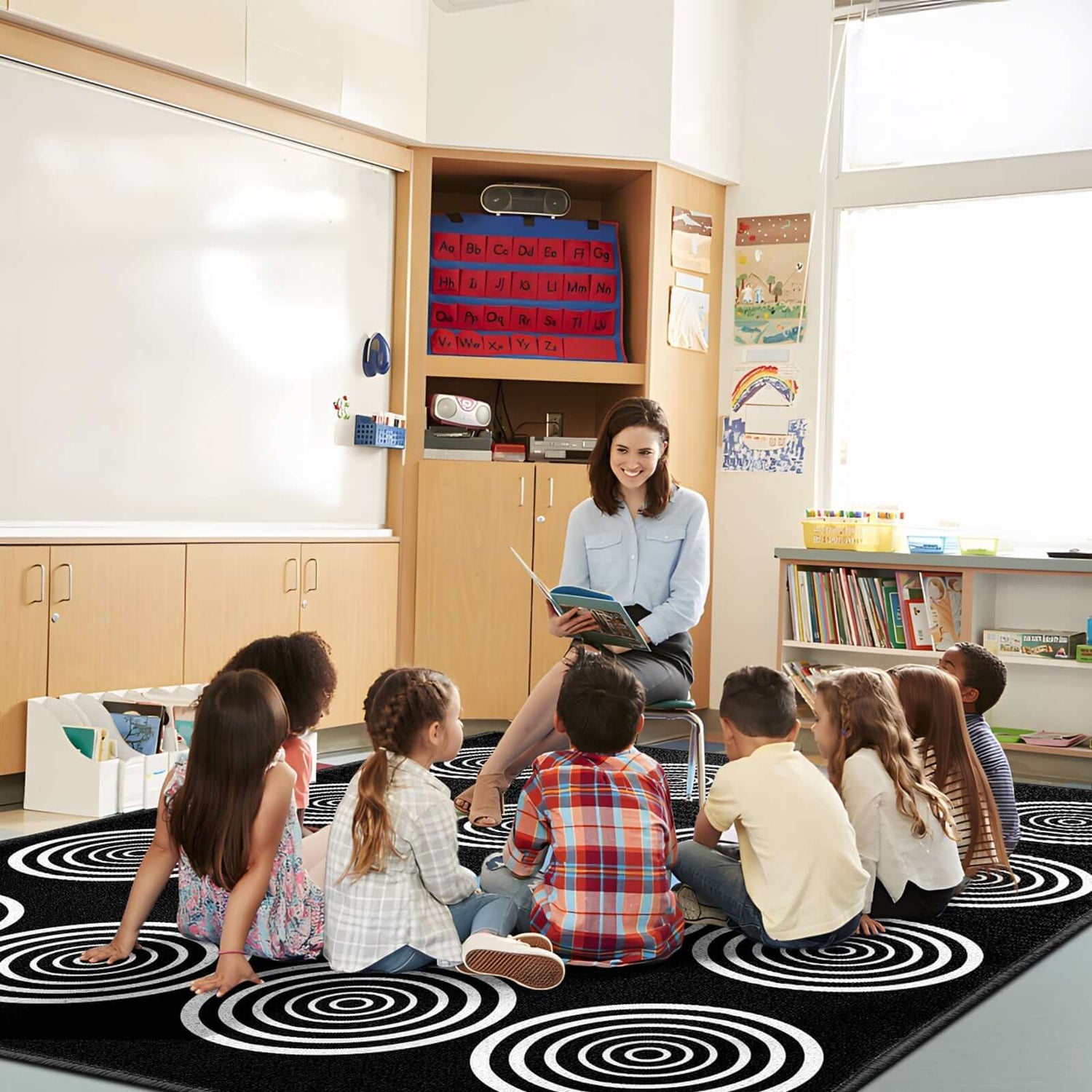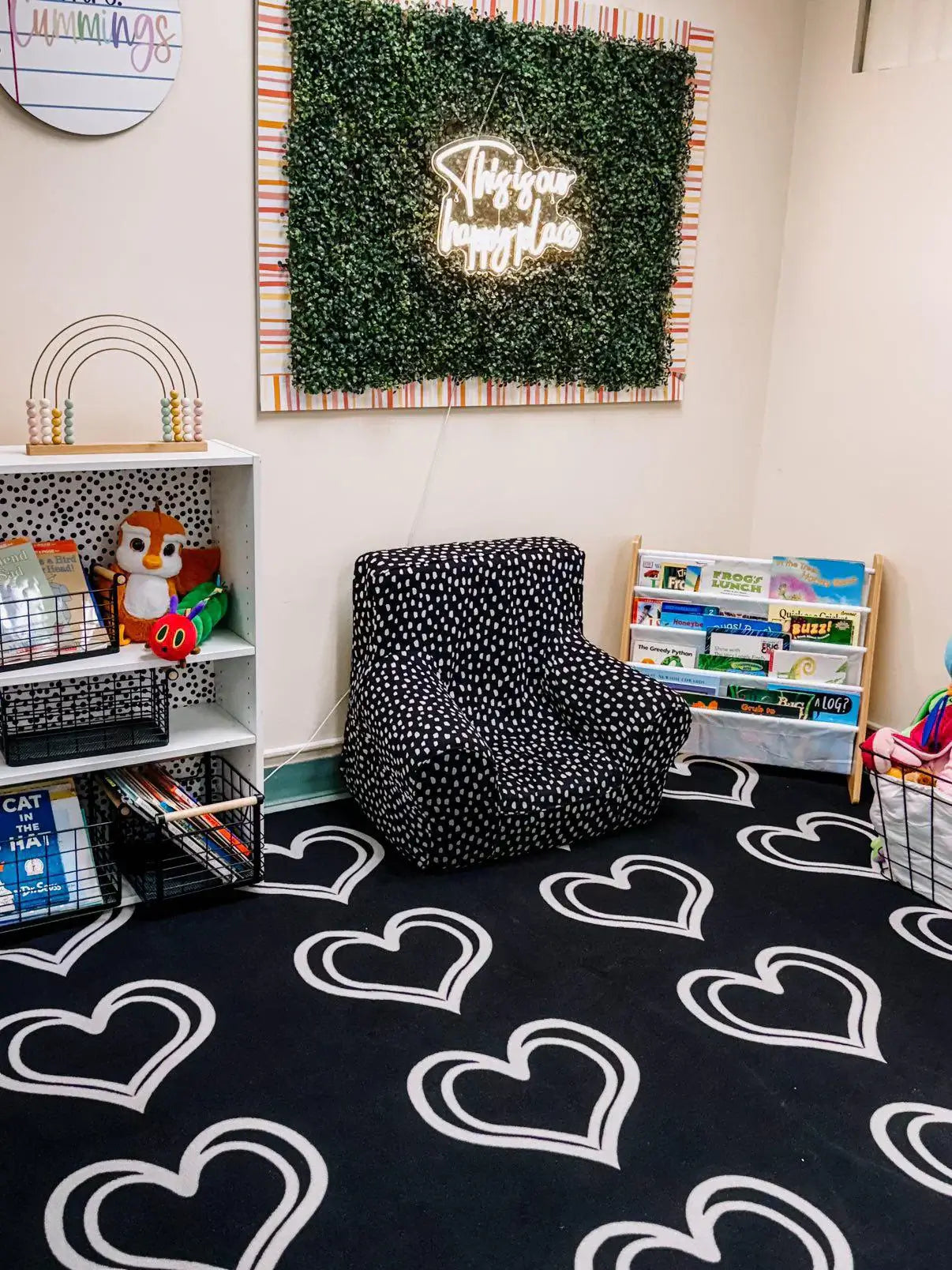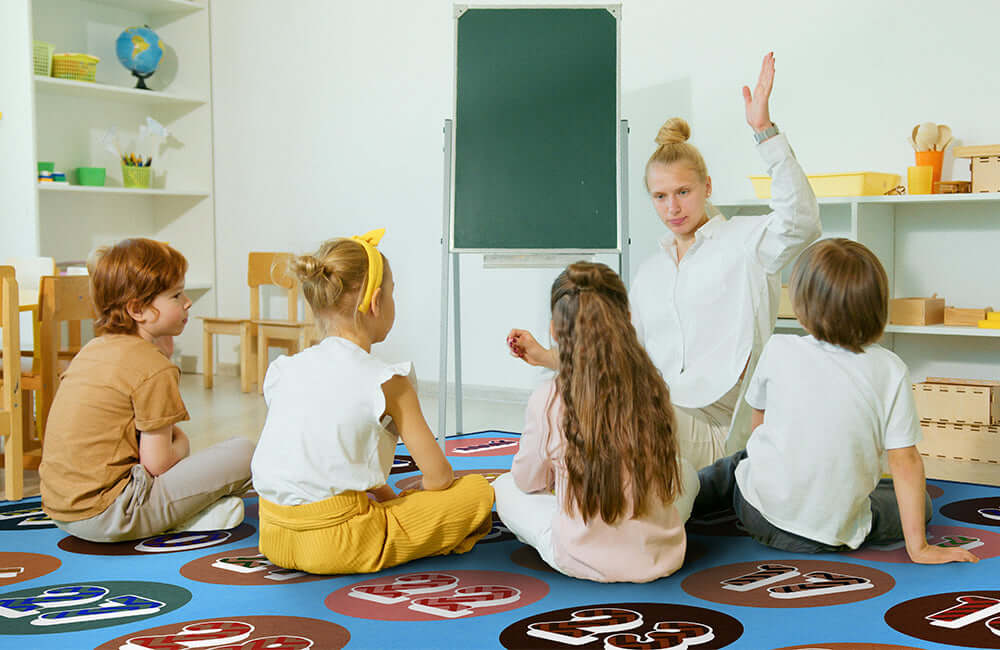Understanding Multi-Age Classroom Dynamics
Multi-age classrooms, also known as composite classes or mixed-grade environments, combine students spanning two or more grade levels in single learning spaces.
Research from U.S. News & World Report indicates that these classrooms can be "as effective as single-grade schooling in terms of academic achievement and better in terms of social learning."
This educational model requires thoughtful environmental design to support its unique pedagogical approach.
Developmental Span Considerations: Multi-age classrooms typically serve students with age differences spanning 2-3 years, creating significant variation in physical, cognitive, and social development.
A classroom might include both 6-year-olds learning to read and 9-year-olds tackling complex math concepts.
This diversity demands flexible physical environments that accommodate multiple learning levels simultaneously.
Collaborative Learning Focus: Unlike traditional age-segregated classrooms, multi-age environments emphasize peer teaching, mentorship, and collaborative discovery.
Older students naturally assume leadership roles while younger children benefit from observing and learning from their more experienced peers.
Physical spaces must support these dynamic interactions.
Individualized Instruction: Teachers in multi-age classrooms continuously assess and group students based on ability rather than age, requiring flexible learning zones that can be reconfigured quickly. Rugs serve as crucial tools for defining these adaptable spaces.
Essential Design Principles for Multi-Age Classroom Rugs
Successful multi-age classroom rugs must balance multiple competing needs while supporting the collaborative spirit essential to this educational model.
Flexible Sizing Options: Multi-age environments require rugs of various sizes to accommodate different group configurations.
Large rugs support whole-class instruction where 6-year-olds sit alongside 9-year-olds, while smaller Small Classroom Rugs create intimate spaces for peer tutoring or independent work.
Consider rug systems that can be combined or separated as needed.
Age-Neutral Aesthetics: Designs must appeal to the full age range without alienating younger or older students.
Avoid overly juvenile themes that embarrass older students or sophisticated patterns that don't engage younger learners.
Geometric patterns, Nature Classroom Rugs themes, and subtle educational elements work well across age groups.
Multi-Level Educational Integration: Educational content should offer entry points for different developmental levels.
A world map rug might help younger students learn continent names while older students explore geography and cultural connections.
Number patterns can support basic counting for some while challenging others with multiplication concepts.
Durability for Intensive Use: Multi-age classrooms often have higher enrollment than traditional single-grade classes, increasing rug wear.
Invest in commercial-grade materials designed for heavy educational use. Look for reinforced edges, stain-resistant treatments, and high-density construction.
Creating Dynamic Learning Zones
Multi-age classrooms require maximum spatial flexibility to support constantly changing groupings and activities throughout the day.
Adaptable Instruction Areas: Central rugs should accommodate mixed-age groups comfortably while allowing for clear sight lines and easy teacher movement.
Consider rugs with subtle organizational elements like sitting spots that can work for different age groups without being restrictive.
Peer Teaching Spaces: Smaller rugs strategically placed around the classroom create perfect environments for older students to mentor younger peers.
These spaces should feel separate enough for focused interaction while remaining visible for teacher supervision. Position near resource areas to support student-led instruction.
Independent Work Zones: Multi-age students need quiet spaces for individual work at their appropriate level.
Comfortable rug areas near natural light sources provide perfect spots for independent reading, reflection, or skill practice without isolating students from the classroom community.
Collaborative Project Areas: Medium-sized rugs can define spaces for mixed-age group projects where students contribute different skills to shared goals.
These areas should accommodate materials spread out while maintaining comfortable seating for extended work sessions, especially when using Round Classroom Rugs to encourage group flow.
Supporting Social-Emotional Development
The social dynamics in multi-age classrooms offer unique opportunities and challenges that thoughtful rug placement can help address.
Mentorship Encouragement: Strategic rug placement can naturally encourage older students to support younger peers.
Positioning Reading Rugs near classroom libraries creates opportunities for older students to read to younger children, building literacy skills for both groups while fostering positive relationships.
Conflict Resolution Spaces: Mixed-age groups sometimes experience social tensions due to developmental differences.
Quiet rug areas can serve as peaceful spaces for working through conflicts, practicing social skills, or simply taking breaks when interactions become overwhelming.
Leadership Development: Older students in multi-age classrooms often develop strong leadership skills.
Rugs can help define spaces where these students can lead activities, present work, or facilitate group discussions, building confidence and communication abilities.
Inclusive Community Building: Well-designed rug arrangements help create classroom communities where all ages feel valued and included.
Avoid segregating by age; instead, create spaces that naturally bring different age groups together for learning and socialization.
Curriculum Integration Across Age Groups
Multi-age classroom rugs must support curriculum delivery that meets diverse learning needs simultaneously.
Literacy Development: Reading rugs should support emergent readers learning letter sounds alongside fluent readers exploring complex texts.
Consider rugs with subtle alphabetic elements that don't overwhelm older students while supporting younger learners. Comfortable reading corners accommodate independent reading at all levels.
Mathematical Thinking: Number and pattern rugs can support mathematical development across age ranges.
Younger students might use these rugs for basic counting and number recognition while older students explore patterns, fractions, or geometric concepts—Educational Rugs are a great option for supporting both.
Choose designs sophisticated enough for upper elementary use.
Scientific Exploration: Nature-themed or science-related rugs support inquiry-based learning across age groups.
Younger students observe and describe while older students hypothesize and analyze. These rugs should inspire curiosity without being overly busy or distracting.
Social Studies Connections: World maps, cultural patterns, and historical themes work well in multi-age settings.
These designs support geography instruction for all ages while allowing deeper exploration of cultural understanding and historical thinking for older students.
Technology Integration in Multi-Age Environments
Modern multi-age classrooms increasingly incorporate technology tools that must work for students across developmental ranges.
Device Compatibility: Rugs must provide stable surfaces for various technology tools, from simple tablets for younger students to laptops for older learners.
Avoid overly plush surfaces that interfere with device stability while maintaining comfort for extended floor activities.
Collaborative Technology Use: Mixed-age groups often work together on technology projects, requiring rugs that accommodate multiple students around shared devices.
Consider how rug placement supports screen visibility and collaborative interaction around technology tools.
Digital Learning Support: Some educational rugs now feature QR codes or augmented reality elements that can provide different content levels for different age groups.
These features can offer simple games for younger students while providing complex challenges for older learners.
Access and Safety: Plan rug placement to maintain access to electrical outlets and technology carts while ensuring safe cord management around mixed-age groups with varying levels of safety awareness.
Practical Implementation Strategies
Successfully implementing rug systems in multi-age classrooms requires careful planning and ongoing adjustment.
Phased Introduction: Introduce new rug arrangements gradually, allowing students and teachers to adjust to spatial changes. Start with one key area and expand as the classroom community adapts to new configurations.
Student Involvement: Include students in planning rug arrangements, giving them ownership of their learning environment.
Older students can help younger peers understand expectations for different rug areas, building community responsibility.
Seasonal Flexibility: Plan for seasonal changes in classroom dynamics. Beginning-of-year arrangements might need more structure, while mid-year configurations can allow greater student autonomy in choosing appropriate spaces.
Regular Assessment: Continuously evaluate how rug arrangements support learning objectives and social dynamics.
Be prepared to adjust configurations based on student needs, curriculum demands, and classroom management requirements.
Budget Considerations for Multi-Age Programs
Multi-age classrooms often require more complex spatial solutions, making budget planning crucial for successful implementation.
Investment Prioritization: Focus premium rug purchases on areas receiving the most diverse use.
Main instruction areas and collaborative spaces warrant higher-quality investment, while specialized zones might use more economical options.
Grant Opportunities: Many educational grants specifically support innovative teaching approaches like multi-age education. Research funding sources that value collaborative learning, differentiated instruction, and inclusive education practices.
Shared Resource Planning: Multi-age programs often share resources across traditional grade boundaries. Coordinate rug purchases with other multi-age teachers to achieve bulk pricing and consistent quality standards.
Long-Term Value Analysis: Calculate rug costs over expected lifespan, considering the intensive use typical in multi-age environments. Higher-quality rugs often provide better value despite increased initial investment.
Health and Safety in Mixed-Age Environments
Multi-age classrooms present unique safety considerations due to the wide range of student ages and developmental levels.
Age-Appropriate Safety: Younger students may require different safety considerations than older classmates.
Ensure rug backing provides adequate slip resistance for students still developing gross motor skills while supporting the more active play of older children.
Allergy and Sensitivity Awareness: With wider age ranges come increased likelihood of various allergies and sensitivities.
Choose hypoallergenic materials and low-VOC options that accommodate the diverse health needs of multi-age populations.
Supervision Considerations: Rug placement should support teachers' ability to supervise diverse age groups simultaneously.
Avoid creating hidden spaces where younger students might be unsupervised or where inappropriate interactions could occur.
Emergency Procedures: Consider how rug arrangements support emergency evacuation procedures with mixed-age groups.
Ensure clear pathways and quick access to exits for students of varying mobility levels.
Building Inclusive Learning Communities
The ultimate goal of multi-age classroom design is creating inclusive communities where all students feel valued and supported.
Cultural Responsiveness: Choose rug designs that reflect the diverse backgrounds likely represented in multi-age populations.
Avoid patterns that might exclude or misrepresent cultural groups while celebrating global diversity.
Ability Inclusion: Multi-age classrooms often include students with diverse learning needs and abilities.
Ensure rug selections and placements accommodate various physical and cognitive needs without stigmatizing differences.
Social Integration: Thoughtful rug arrangements can help break down age-based social barriers, encouraging friendship and mentorship across age groups.
Create spaces that naturally bring different ages together while respecting individual comfort levels.
Growth Mindset Development: According to research on multi-age classrooms, mixed-age environments help students develop growth mindsets by observing learning progression across age groups. Rug arrangements should support this observation and inspiration.
Conclusion: Transforming Multi-Age Learning Through Thoughtful Design
Multi-age classroom rugs serve as foundational elements in creating successful mixed-grade learning environments.
When thoughtfully selected and strategically placed, these rugs support the collaborative learning, peer mentorship, and individualized instruction that make multi-age education so powerful.
The investment in quality multi-age classroom rugs pays dividends through improved student relationships, enhanced learning outcomes, and stronger classroom communities.
By creating flexible, inclusive spaces that honor the diverse needs of mixed-age groups, educators build environments where all students can thrive.
Classroom rugs transform multi-age classrooms from challenging management situations into dynamic learning communities where students learn not just academic content, but crucial life skills like leadership, empathy, and collaboration.
These environments prepare students for real-world situations where they'll work and learn alongside people of all ages and backgrounds.




Leave a comment
This site is protected by hCaptcha and the hCaptcha Privacy Policy and Terms of Service apply.